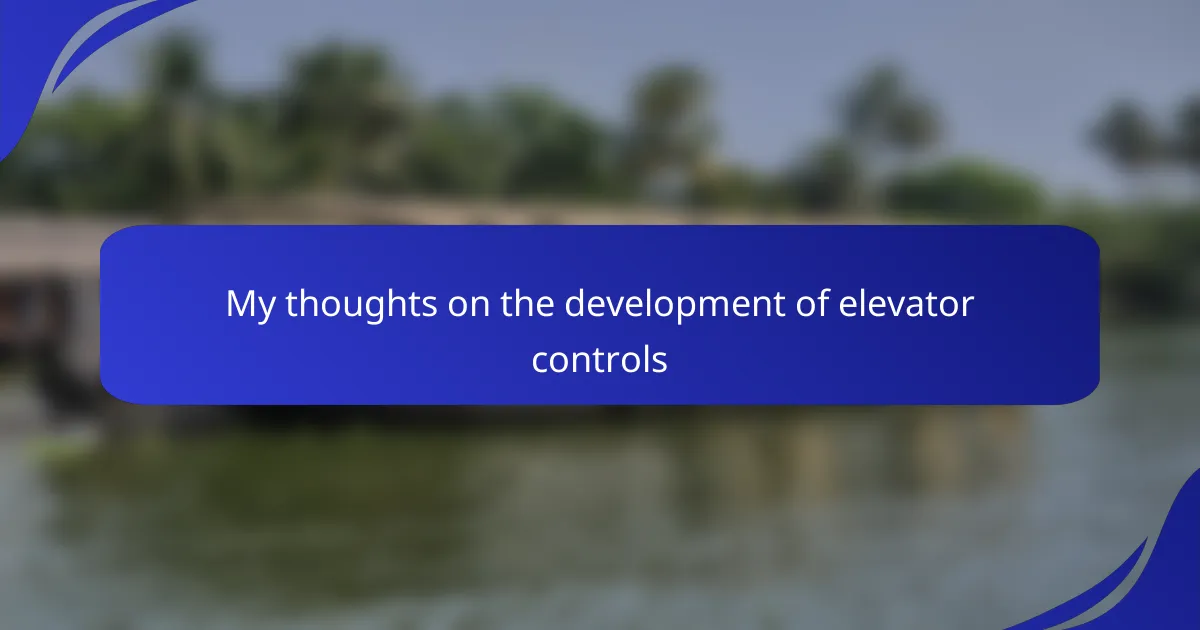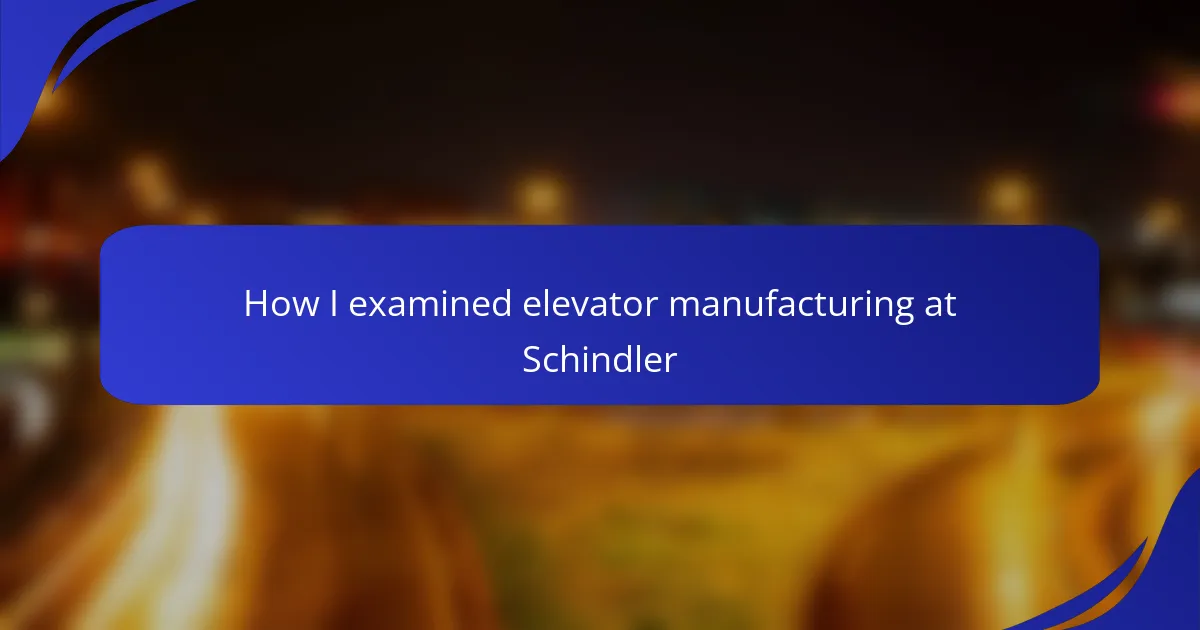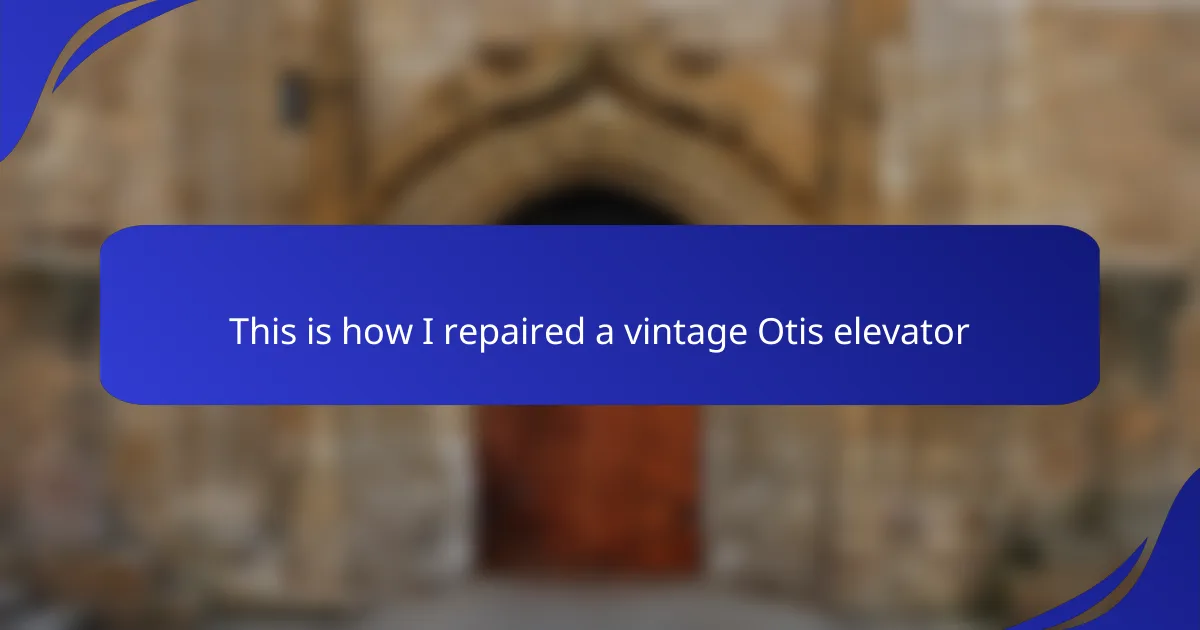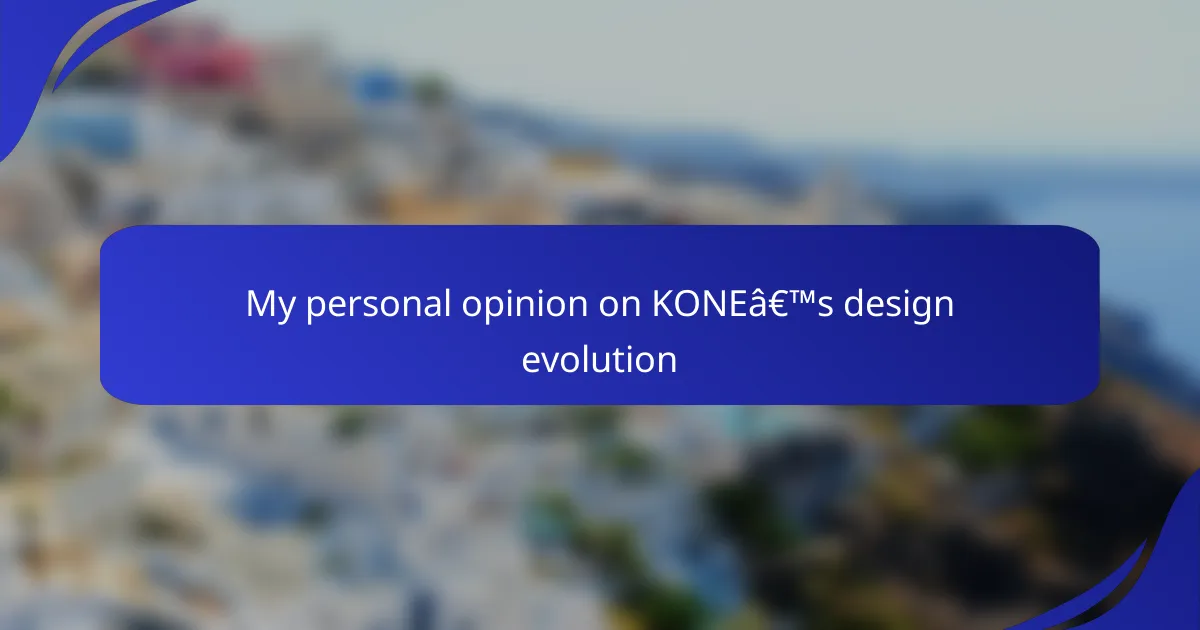Key takeaways
- The elevator industry has evolved from simple pulley systems in ancient times to advanced microprocessor-controlled systems in modern skyscrapers.
- Key innovations such as destination dispatch technology and energy regeneration systems have significantly improved efficiency, safety, and sustainability in elevator operations.
- Future trends include touchless controls, AI integration, and data analytics, enhancing user experience and reducing operational costs.
- The integration of IoT technology is set to optimize maintenance and reduce waiting times, promising a smarter and more efficient elevator experience.
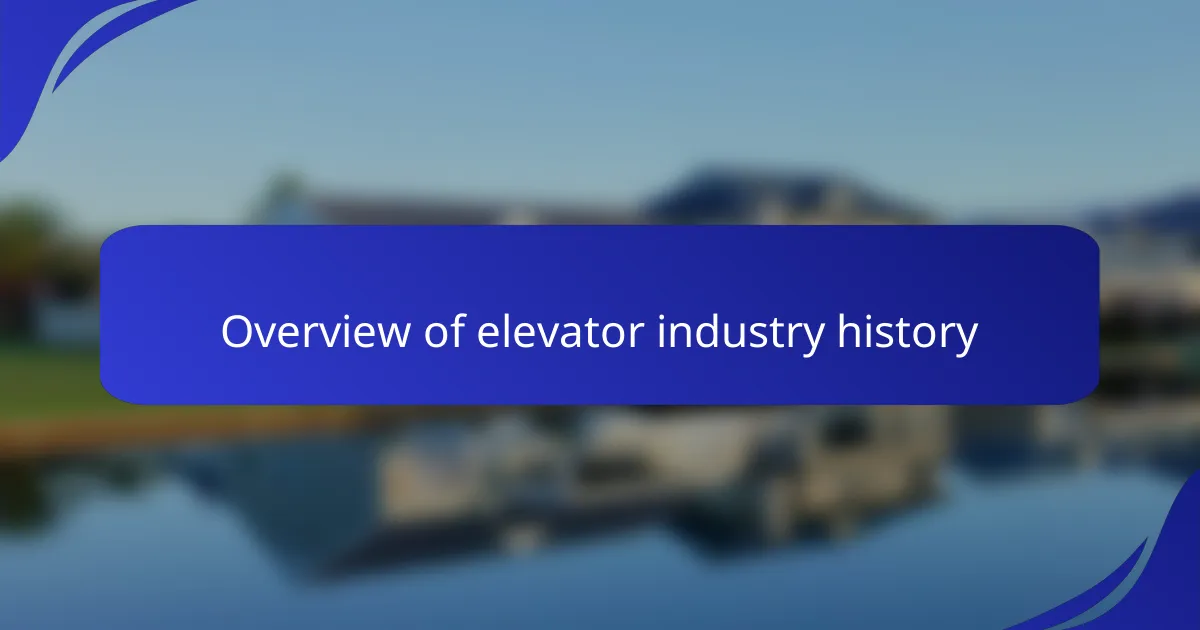
Overview of Elevator Industry History
The evolution of the elevator industry is a fascinating journey that mirrors advancements in engineering and urban development. From the rudimentary hoists used in ancient civilizations to the sophisticated systems we have today, each iteration reflects society’s changing needs and aspirations. I remember standing in awe of a glass elevator in a skyscraper during a visit to New York City; it was a reminder of how far we’ve come—elevators that once seemed like science fiction now allow us to travel seamlessly between floors.
We’ve witnessed remarkable milestones in this industry, including:
- Early Innovation (Ancient Times): The first elevators were simple pulley systems used in ancient Egypt and Greece.
- Industrial Revolution (19th Century): The introduction of steam-powered elevators revolutionized vertical transportation, paving the way for tall buildings.
- Safety Advancements (1852): Elisha Otis invented the safety elevator, which greatly improved safety and trust in elevators.
- Electric Elevators (Late 19th Century): The transition to electric elevators allowed for much faster travel and the construction of skyscrapers.
- Modern Controls (20th Century): The development of microprocessor technology led to advanced control systems for efficiency and safety.
Reflecting on these advancements makes me appreciate the role elevators play in our daily lives, connecting people and places in ways we often take for granted.

Evolution of Elevator Controls
The evolution of elevator controls has been remarkable, changing from simple manual levers to sophisticated automated systems. I remember visiting a historic building where the original Otis elevator control was still in use. The click-clack sounds of those mechanical levers felt nostalgic, but it also made me appreciate how far we’ve come in terms of safety and efficiency.
As technology progressed, the introduction of microprocessors revolutionized elevator controls, providing not only smoother rides but also smarter traffic management. I find it fascinating that these systems can now anticipate demand patterns and reduce wait times, creating a more pleasant experience for passengers. Such advancements reflect just how intertwined technology and daily life have become.
- The early elevator controls relied on mechanical systems with manual operation.
- The first electric elevators introduced basic push-button controls in the late 19th century.
- The advent of microprocessors in the 1980s allowed for advanced automation and greater efficiency.
- Modern systems utilize predictive algorithms to optimize elevator routing based on passenger patterns.
- Smart technology integration has led to features like remote monitoring and mobile app controls for convenience.
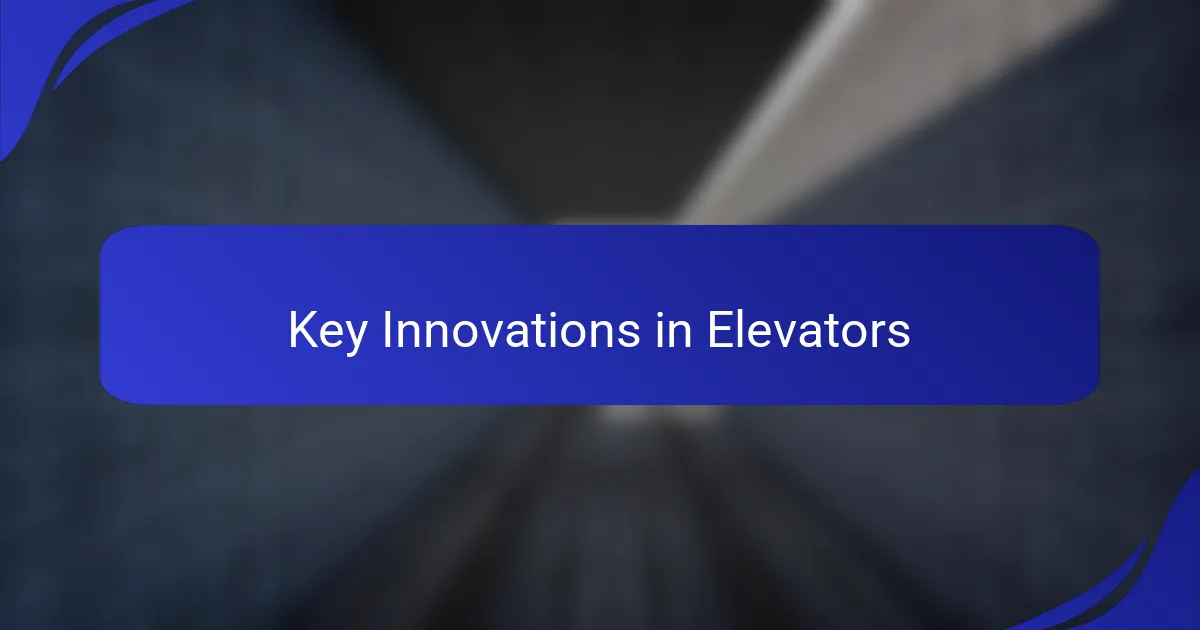
Key Innovations in Elevators
Key innovations in elevator controls have significantly shaped the functionality and safety of vertical transportation. One standout development is the introduction of microprocessor-based control systems. These systems not only enhance precision in operation but also allow for smarter routing of elevators, making travel more efficient. I recall observing how these advancements have drastically reduced wait times in busy high-rise buildings, truly transforming the user experience.
Another remarkable innovation has been the implementation of destination dispatch technology. This system groups passengers going to the same floor, optimizing travel time further. I remember my first encounter with a destination dispatch elevator; it felt almost futuristic and was a clear indication of how technology can improve everyday tasks.
Here’s a comparison table highlighting these innovations:
| Innovation | Impact |
|---|---|
| Microprocessor Control | Increases efficiency and precision in elevator operation |
| Destination Dispatch | Reduces wait times by grouping passengers |
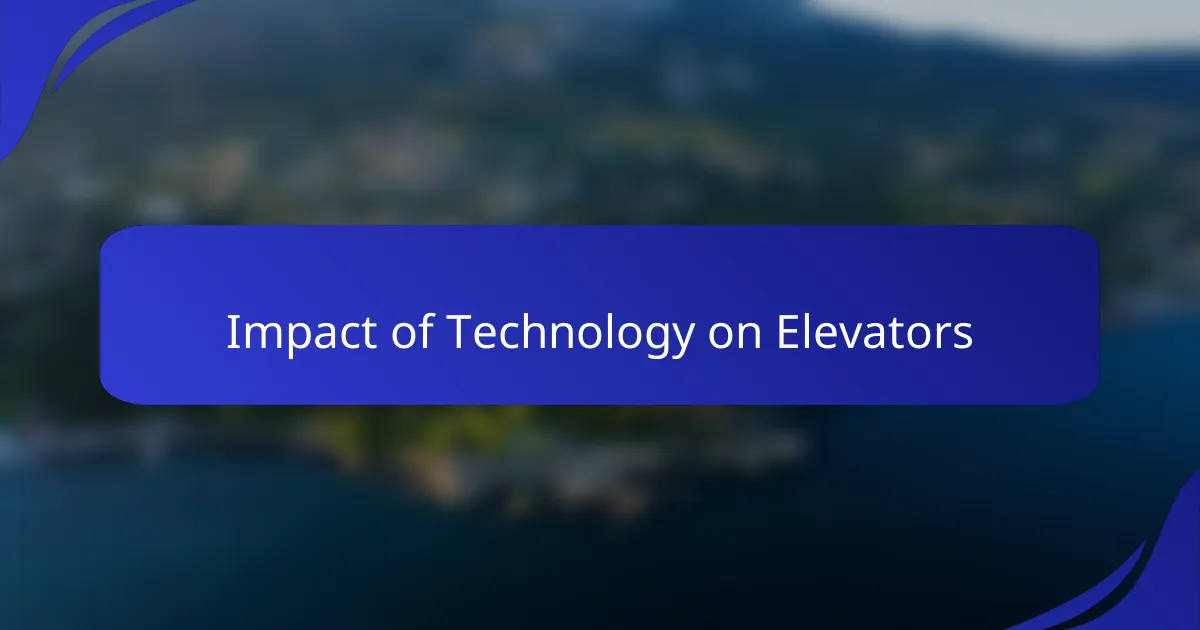
Impact of Technology on Elevators
The impact of technology on elevators has been nothing short of transformative. I recall stepping into an elevator equipped with a touchscreen interface, amazed at how intuitive the interaction felt. It’s staggering to think that just a few decades ago, we were still pulling levers, and now we’re selecting our floors with the swipe of a finger. This seamless integration of technology has not only improved user experience but has also made elevators safer and more reliable.
Modern elevators are becoming increasingly intelligent, thanks to advancements such as Internet of Things (IoT) connectivity. I was recently in a building where the elevator called itself based on the traffic patterns visible through an app. Imagine being able to predict which elevators will be least busy before you even get there! This kind of predictive technology highlights how far we’ve come, leveraging data to enhance our daily interactions with vertical transportation.
Moreover, energy efficiency has skyrocketed with the introduction of energy regeneration systems. I hadn’t realized how much power elevators could save by feeding energy back into the building’s grid during descent. It’s fascinating to see how these systems not only contribute to environmental sustainability but also reduce operational costs for building owners. These innovations exemplify a perfect harmony between technology and sustainability, a win-win for both users and the planet.

My Perspective on Control Development
The development of elevator controls has been a journey of innovation that always captivates me. I still remember the first time I encountered a digital control panel in a high-rise; it felt like stepping into the future. The tactile engagement of pressing buttons has evolved into sleek touchscreens that respond to a mere tap, making the experience not only more efficient but almost enjoyable. Have you ever thought about how a simple touch can trigger a complex system? It’s remarkable.
As I look back on the history of these systems, I can’t help but feel awe at how microprocessor technology transformed the landscape. I once visited a busy office tower where the elevator system not only anticipated peak hours but rearranged its services accordingly. Standing there, amidst the bustling crowd, I marveled at the elegance of technology subtly orchestrating our movements—it’s like having a silent conductor managing the flow of people.
Furthermore, I’ve experienced the thrill of stepping into an elevator where destination dispatch is employed. It was fascinating to see how grouping passengers by their floors creates such efficiency. At that moment, I wondered how often we take these technological advancements for granted. The ability to travel smoothly and swiftly between floors, while avoiding long waits, really enhances our day-to-day lives, and I find it a fabulous reflection of human ingenuity.
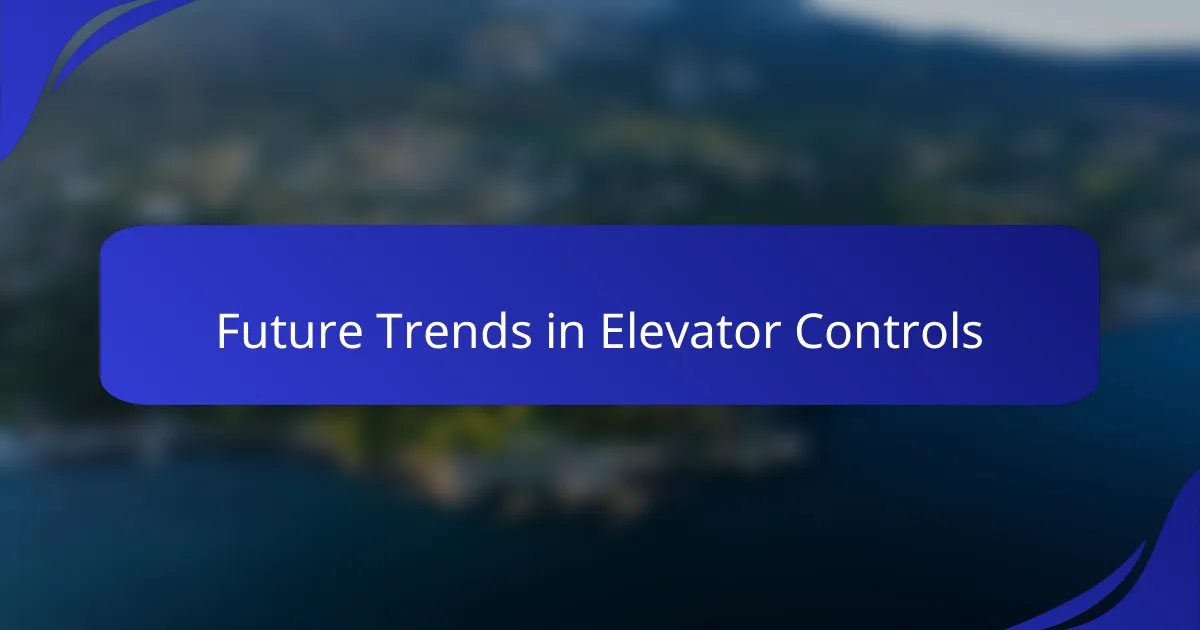
Future Trends in Elevator Controls
Elevator controls are on the cusp of a major technological shift. With the rise of smart building technology, I’m particularly excited about the integration of IoT (Internet of Things) within elevator systems. This connectivity not only enhances efficiency but also allows predictive maintenance, which means fewer breakdowns and a smoother experience for users. I remember a time when waiting for an elevator was a game of patience; it feels great to see that future systems may minimize those frustrating delays.
As we look ahead, several trends are emerging in elevator controls:
- Touchless Controls: The need for hygiene in shared spaces is driving the adoption of touchless technology, reducing the spread of germs.
- AI Integration: Artificial Intelligence is set to optimize traffic flow, making elevators smarter in handling peak times with ease.
- Energy Efficiency: New controls will focus on energy recovery systems, which can significantly lower operational costs.
- User-Centric Design: Enhanced interfaces tailored to user preferences promise a more intuitive experience.
- Data Analytics: Real-time monitoring and analytics will further improve maintenance and enhance operational performance.
These advancements promise an exciting future not just for the elevator industry, but for the overall experience of building occupants.
